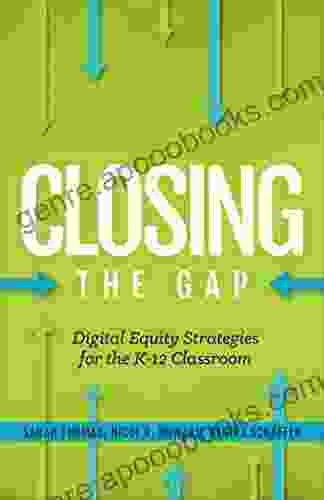Digital Equity Strategies for the 21st Century Classroom

In the 21st century, digital technologies are essential for learning and success. However, not all students have equal access to these technologies, and this can lead to significant disparities in educational outcomes. Digital equity is the goal of ensuring that all students have access to the technology and skills they need to succeed in a digital world.
This article provides practical strategies for educators to promote digital equity in their classrooms. These strategies are based on research and best practices, and they can help to ensure that all students have the opportunity to learn and succeed in the digital age.
Digital equity is important for a number of reasons. First, it is essential for student success. Students who do not have access to technology and digital skills are at a significant disadvantage in school and beyond. They are less likely to be able to complete their homework, participate in online discussions, and access educational resources. This can lead to lower grades, higher dropout rates, and reduced opportunities for success in college and careers.
4.2 out of 5
| Language | : | English |
| File size | : | 2074 KB |
| Text-to-Speech | : | Enabled |
| Screen Reader | : | Supported |
| Enhanced typesetting | : | Enabled |
| Print length | : | 118 pages |
| Paperback | : | 312 pages |
| Item Weight | : | 14.7 ounces |
| Dimensions | : | 6 x 0.71 x 9 inches |
Second, digital equity is important for social justice. All students deserve to have the same opportunities to succeed, regardless of their race, gender, socioeconomic status, or other factors. Digital equity helps to level the playing field and ensure that all students have the chance to reach their full potential.
Third, digital equity is important for the future of our economy and society. In a digital world, workers need to be able to use technology effectively. Students who do not have access to technology and digital skills will be at a disadvantage in the job market and less likely to be able to contribute to the economy.
There are a number of strategies that educators can use to promote digital equity in their classrooms. These strategies include:
- Providing access to technology: This means ensuring that all students have access to computers, tablets, or other devices with internet connectivity. It also means providing access to software and other resources that students need to learn and succeed.
- Building digital skills: This means teaching students how to use technology effectively. This includes teaching them how to use basic computer skills, how to access and evaluate online information, and how to use technology for learning and collaboration.
- Creating a supportive learning environment: This means creating a classroom where all students feel comfortable using technology. It also means providing support and encouragement to students who are struggling with technology.
- Engaging families and the community: This means working with parents and other community members to support digital equity. This can include providing access to technology, offering training on digital skills, and creating opportunities for students to use technology in their homes and communities.
Digital equity is essential for student success, social justice, and the future of our economy. By implementing the strategies outlined in this article, educators can help to ensure that all students have the opportunity to learn and succeed in the digital age.
4.2 out of 5
| Language | : | English |
| File size | : | 2074 KB |
| Text-to-Speech | : | Enabled |
| Screen Reader | : | Supported |
| Enhanced typesetting | : | Enabled |
| Print length | : | 118 pages |
| Paperback | : | 312 pages |
| Item Weight | : | 14.7 ounces |
| Dimensions | : | 6 x 0.71 x 9 inches |
Do you want to contribute by writing guest posts on this blog?
Please contact us and send us a resume of previous articles that you have written.
 Book
Book Novel
Novel Page
Page Chapter
Chapter Text
Text Story
Story Genre
Genre Reader
Reader Library
Library Paperback
Paperback E-book
E-book Magazine
Magazine Newspaper
Newspaper Paragraph
Paragraph Sentence
Sentence Bookmark
Bookmark Shelf
Shelf Glossary
Glossary Bibliography
Bibliography Foreword
Foreword Preface
Preface Synopsis
Synopsis Annotation
Annotation Footnote
Footnote Manuscript
Manuscript Scroll
Scroll Codex
Codex Tome
Tome Bestseller
Bestseller Classics
Classics Library card
Library card Narrative
Narrative Biography
Biography Autobiography
Autobiography Memoir
Memoir Reference
Reference Encyclopedia
Encyclopedia Robert Wuthnow
Robert Wuthnow Roger D Congleton
Roger D Congleton Nadine Cohodas
Nadine Cohodas Suzanne Kamata
Suzanne Kamata Patricia Haverton
Patricia Haverton Richard Woodman
Richard Woodman Stephen Samuel Smith
Stephen Samuel Smith Terence Mcsweeney
Terence Mcsweeney Samuel Moyn
Samuel Moyn Michael M Crow
Michael M Crow Raza Hasan
Raza Hasan M L Ryan
M L Ryan Sheila O Flanagan
Sheila O Flanagan Todd Telander
Todd Telander Kimberly A Rogers
Kimberly A Rogers Michelle Mercer
Michelle Mercer Nicky Epstein
Nicky Epstein Kim Brake
Kim Brake Sj Bennett
Sj Bennett Mark Vernon
Mark Vernon
Light bulbAdvertise smarter! Our strategic ad space ensures maximum exposure. Reserve your spot today!

 Louis HayesDelphi Complete Works Of Thomas Chatterton: Illuminating the Literary Legacy...
Louis HayesDelphi Complete Works Of Thomas Chatterton: Illuminating the Literary Legacy... Adrian WardFollow ·12.9k
Adrian WardFollow ·12.9k Connor MitchellFollow ·13.1k
Connor MitchellFollow ·13.1k Dan HendersonFollow ·17.1k
Dan HendersonFollow ·17.1k Danny SimmonsFollow ·13.6k
Danny SimmonsFollow ·13.6k F. Scott FitzgeraldFollow ·3k
F. Scott FitzgeraldFollow ·3k Ian PowellFollow ·4.5k
Ian PowellFollow ·4.5k Dawson ReedFollow ·17.9k
Dawson ReedFollow ·17.9k Tyrone PowellFollow ·4.3k
Tyrone PowellFollow ·4.3k

 Finn Cox
Finn CoxCarmen Suite For Flute Quartet (G Alto Flute) ( Carmen...
Experience the Magic of...

 Andy Cole
Andy ColeUncover Hidden Truths: A Comprehensive Guide to Detecting...
: The Silent...

 Ken Simmons
Ken SimmonsUnleash Your Potential: Transform Frustration and...
Are you tired of feeling...

 Rick Nelson
Rick NelsonHard To Kill: A Gripping Thriller That Will Keep You on...
Tom Rollins is a...

 Ivan Turner
Ivan TurnerUnleash the Power of Your Breath: Discover Breath...
In the tapestry of life, where stress and...
4.2 out of 5
| Language | : | English |
| File size | : | 2074 KB |
| Text-to-Speech | : | Enabled |
| Screen Reader | : | Supported |
| Enhanced typesetting | : | Enabled |
| Print length | : | 118 pages |
| Paperback | : | 312 pages |
| Item Weight | : | 14.7 ounces |
| Dimensions | : | 6 x 0.71 x 9 inches |












